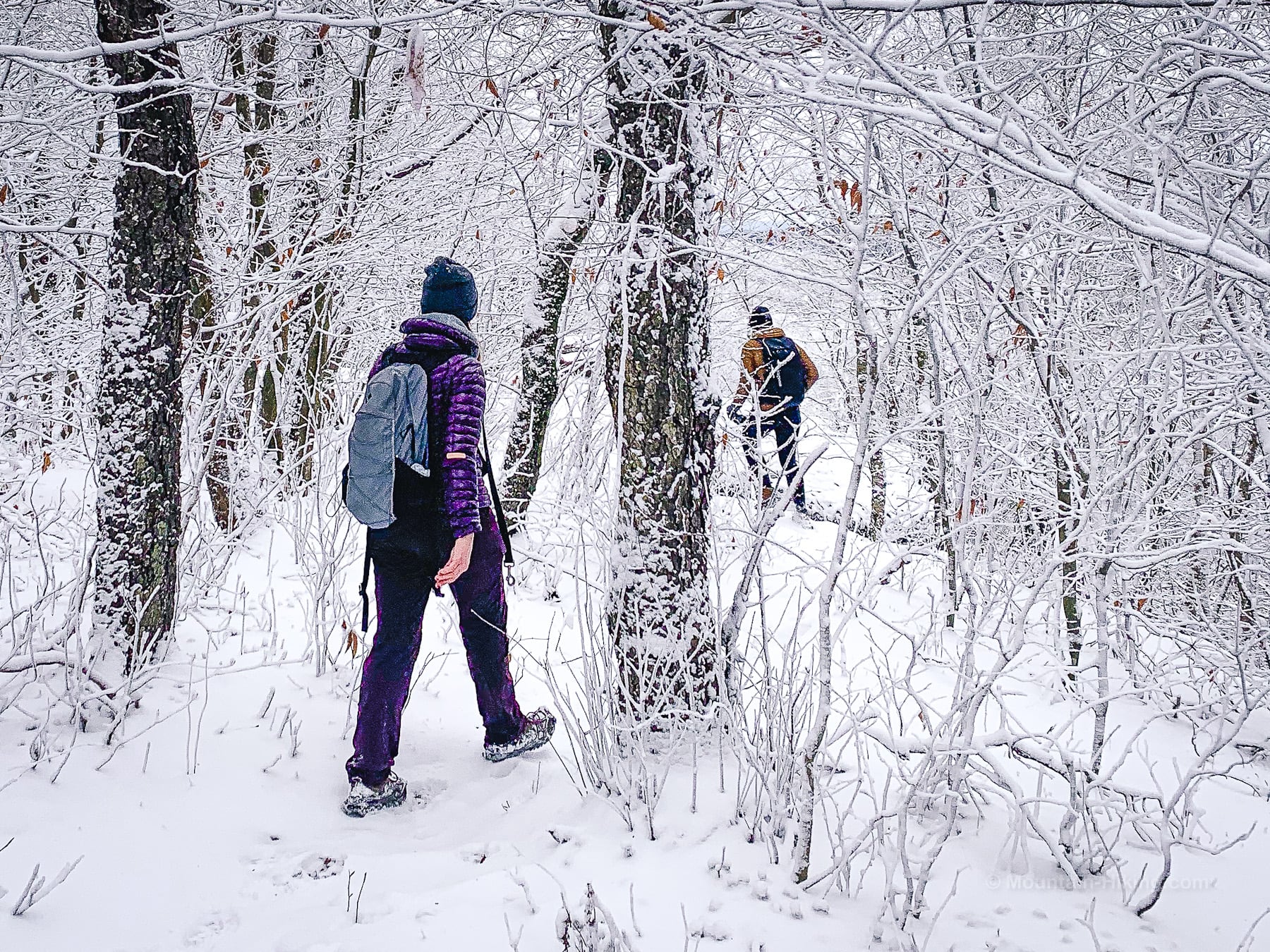Disclosure: This content may contain affiliate links. Read my disclosure policy.
Winter hiking can be a wonderful and rewarding experience, but it presents specific challenges. The following winter hiking tips will help you become a safe and successful winter hiker:
- Plan ahead: Before you set out, research the trail you plan to hike and make sure it is open and safe for winter hiking. Check total mileage and elevation gain. Check the weather forecast and trail conditions. Make sure you know what time sunset is at for the day of your hike, and set a turn-around time that you stick to.
- Dress in layers: Wearing multiple thin layers allows you to easily add or remove clothing as needed to regulate your body temperature. Choosesynthetic or wool materialsthat wick moisture away from your skin and help keep you dry. There are three basic layers: base layer, mid layer, and your outer shell. On really cold days, you can add a fourth wicking base layer like a synthetic teeshirt.
- Wear proper footwear: Winter hiking requires sturdy and warm hiking boots with good traction. Look for waterproof boots. Some people like insulated boots in winter. I find my regular three-season boots do fine. Youll definitely need microspikes (aka trail crampons) for added traction, and snowshoes in snow thats deeper than 8 inches.
- Pack the 10 Essentials: Bring plenty of food and water, as well as a map and compass, and a GPS device. A first-aid kit, headlamp, and extra batteries are also necessary.
- Take breaks: Take breaks as needed to rest, snack, and hydrate. But also so as you dont sweat. This will also help you stay warm and dry, which helps prevent hypothermia.
You might also enjoy…
- Challenge › Fire Tower Challenge 2024
- New › Say Goodbye to Blisters
- Follow › Sean’s content on Instagram
- Bugs › Black Fly Season Means Black Fly Bites
- Explore › The Hardest Hikes You Can Do
- Hike More › Catskills, Adirondacks, Hudson Highlands, Gunks, Berkshires
- Stay on the trail: Winter hiking can be treacherous, and it is easy to get lost in the snow. Unless you have great backcountry bushwhacking skills, stay on designated trails to reduce the risk of getting lost or injured.
- Be prepared to turn back if conditions become too dangerous. Mountain weather can change quickly, so it is important to be prepared with gear and to turn around when its wise.
- Know your limits: It is important to know your own physical limits and not push too hard. Take your time. Choose trails and routes that are within your ability.
- Travel in a group: Winter hiking can be safer and more fun when done with friends. If you do hike alone, be sure to let someone know your plans and expected return time. Make sure they have the correct emergency number to call.
- Leave no trace: Leave the trail as you found it and follow the principles of Leave No Trace to minimize your impact in the mountains. (You can also Leave No Trace at the Trailhead.)
By following these tips, you can have a safe and enjoyable winter hiking experience. Remember to always be prepared and to respect the power of nature.
For more detail and lots of helpful links, read How to Winter Hike: The Essential Roundup.
Happy hiking!
Read More
Get full access…
Get instant access to the full version of this site and enjoy great supporter benefits: full galleries, full trail notes, early access to the latest content, and more.
Hot on the website right now…
Follow for more…
Follow my @TotalCatskills content on Instagram for regular hiking inspo and safe, inclusive community.

